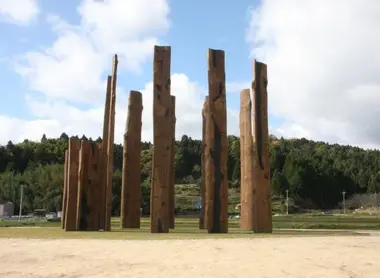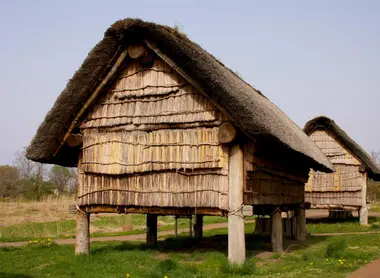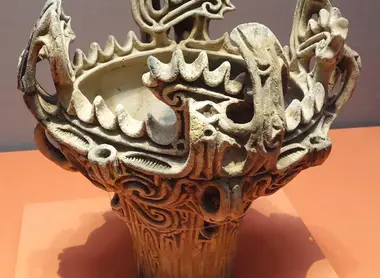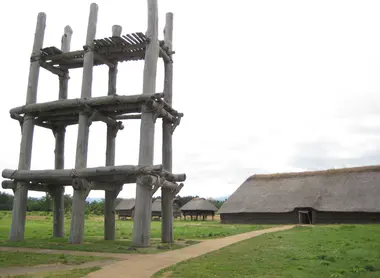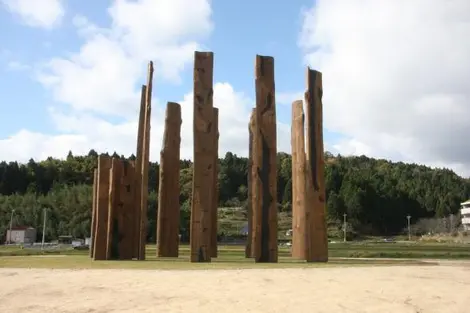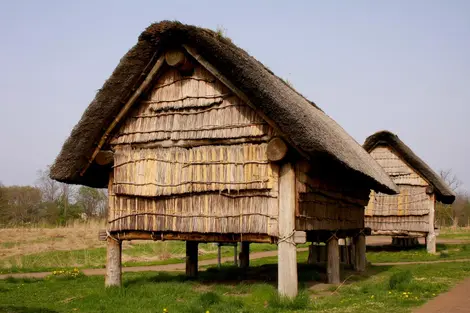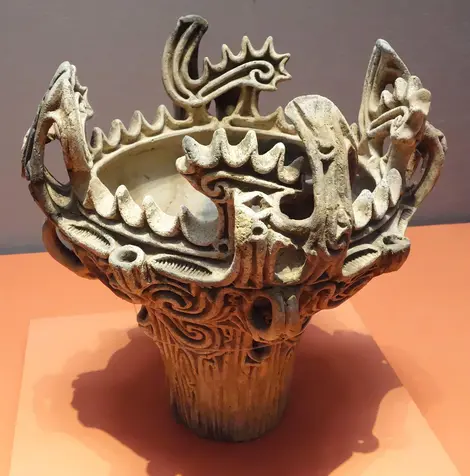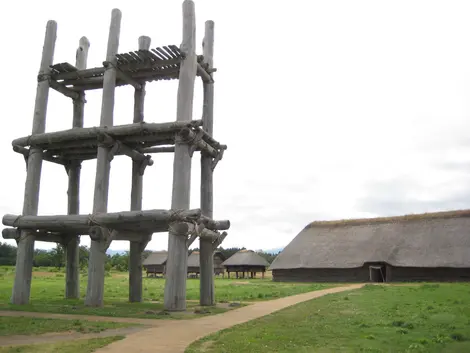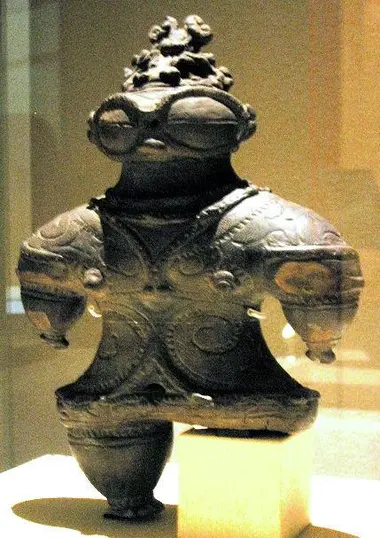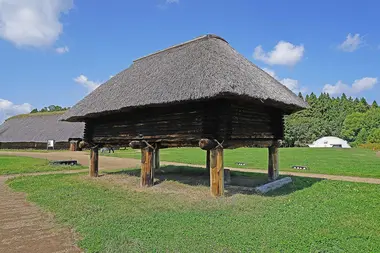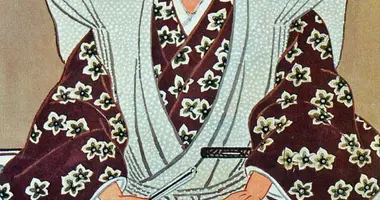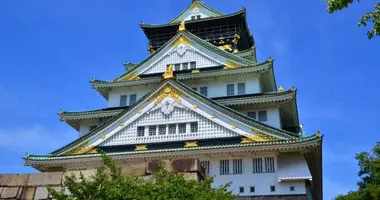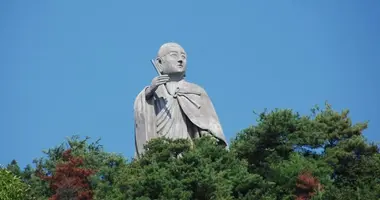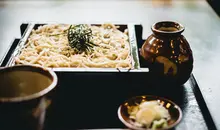La période Jomon (-13 000 av. J-C à -400 av. J-C) 縄文時代
- Publié le : 17/07/2019
- Par : S.R.
- Youtube
L'art dans le japon préhistorique avec la céramique cordée de Jômon
La préhistoire se divise en deuxsous-périodes au Japon. Le Paléolithique, qui commence il y a près de 40 000ans avant Jésus-Christ, et la période dite Jômon, qui elle débute près de 13 000ans avant notre ère. À la découverte d'un Japon primordial.
Des japonais chasseurs-cueilleurs
On distingue habituellement le Paléolithique du Néolithique, les deux grandes ères de la préhistoire, par l’existence de systèmes agricoles et d’élevage au sein des groupes humains étudiés, systèmes qui entraînent une sédentarisation des individus.
L’époque Jômon (-13 000 av. J-C à -400 av. J-C) est une ère dite du Mésolithique, ère intermédiaire durant laquelle les habitants de l’archipel s’adonnaient alors encore à la chasse et à la cueillette alors qu’ils se mettaient de plus en plus à gîter au sein de villages.
L’ère de la poterie préhistorique
L’époque Jômon tient son nom des deux kanji "jô" signifiant "cordes" et "mon",que l’on peut traduire par "décor" ou bien "signe".
En effet, de très nombreuses poteries décorées par impression de corde de cette époque ont été exhumées à travers le pays, les ancêtres des Japonais étant une des toutes premières populations dans l’histoire à faire appel à ce procédé. Pour comparaison, une culture similaire, celle de la céramique cordée, a été aussi retrouvée en Europe du Nord et dans l'ouest russe, mais datant d'une époque bien postérieure (d'environ -3000 à -2200 ans).
On retrouve ce procédé retrouve notamment dans la décoration des très énigmatiques dogû, ces statuettes de terre cuites aux jambes écartées et au bras minuscules utilisées pour les cérémonies, et qui ont été retrouvées du sud de Hokkaido à la région d’Osaka.
- Lire aussi : Le musée de Hida
Les bâtisses plus complexes de l'ère Jômon
L’ère Jômon se caractérise aussi par la formation des premiers villages que l’on puisse retrouver sur les îles.
Organisés pour beaucoup sur une structure concentrique, ils comprenaient en général de 5 à 10 habitations, avec des maisons semi-enterrées et des bâtiments plus grands qui devaient posséder une fonction communautaire. Les morts étaient eux enterrés aux alentours du centre du village.
- Lire aussi : Le parc-musée archéologique de Mawaki
On note par ailleurs une complexification des constructions au fil du temps, comme sur le site de Sannai-Maruyama (qui date de 5500 à 4000 ans avant notre ère) où sont reconstitués une maison longue ainsi qu’une énorme plateforme comprenant au moins 2 étages.
Un centre de gravité qui se déplace vers l’ouest et le nord
À partir du Jômon Moyen, et jusqu’au Jômon Final, la densité de population a baissé continuellement à partir du Tohoku jusqu'au Chubu en passant par le Kanto alors que l’ensemble qui s’étend du Kinki (ancien nom du Kansai) au Kyushu a lui vu son nombre d’habitants augmenter.
Les personnes vivant dans le Kyushu notamment vont alors bénéficier d’apports coréens de la culture Mumun (agriculture du riz, artefacts en bronze…), préparant à distance l’avènement du royaume du Yamataï au début de notre ère. Au nord, Hokkaidô, où se développe la culture Aïnou, est influencé par les mêmes apports de la péninsule coréenne, aidant à l'épanouissement de la future culture Emishi.
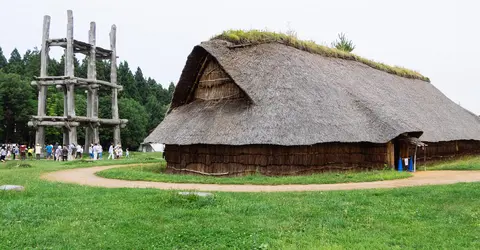
Le village du site de Sannai Maruyama à Aomori
かがみ~
